Discovering The Al Fahidi Historical Neighbourhood In Dubai In 2026
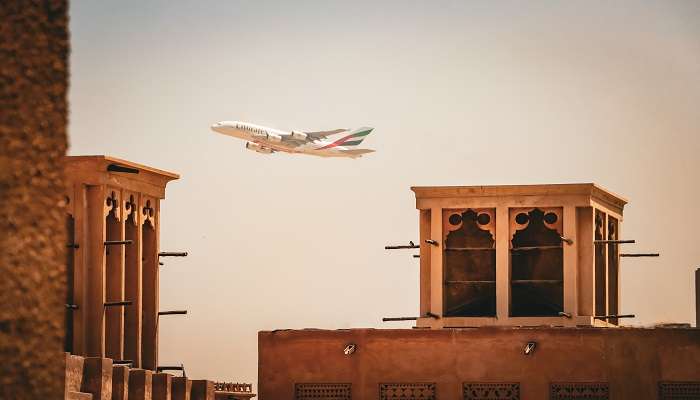
Picturing Dubai always fills the mind with skyscrapers, rapid technological advancements and extreme modernity. However, at the core of this glorious futuristic city lies a place rich in heritage and history. This place is none other than the Al Fahidi Historical Neighbourhood. Set against a backdrop resembling the Arabian Nights tales, Dubai’s historical wonder is a map of its origin. Untouched by modernity, it preserved the quintessential sites that narrate the lost tales of Dubai’s wondrous past. From architectural nuances to artistic ventures, Al Fahidi Historical Neighbourhood has it.
About The Al Fahidi Historical Neighbourhood
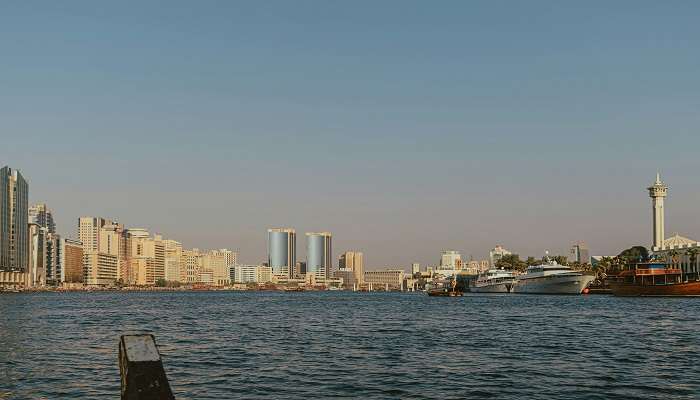
Dubbed as Dubai’s historical district, Al Fahidi Historical Neighbourhood offers a kaleidoscopic view of its past. The district is a tasteful delight for the connoisseurs of art and culture. Filled with beige backgrounds and limited architecture, this little sanctuary of history amazes the most renowned historians.
The winding alleys and traditional wind towers display immense prowess in the design of Dubai’s olden days. Moreover, the area proves the Dubai government’s commitment to paying homage to the history of their land by preserving and promoting it.
Also Read: The Dubai Fountain
History Of Al Fahidi Historical Neighbourhood
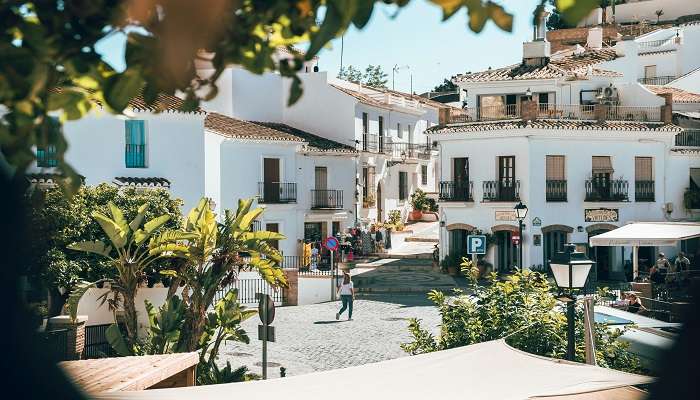
Formerly known as Al Bastakiya, it was named after Iran’s Bastak region, where most of its early inhabitants came from. Al Fahidi Historical Neighborhood was a budding town in the late 19th century when the faraway textile traders and pearl merchants would land here for wealthy returns. The bustling district played a huge role in crafting Dubai as a significant port city.
The town was also an artistic marvel. The Emirati way of life bloomed here, with traditional crafts and close-knit communities. Wind towers constructed to keep the inhabitants safe from heat showcased many architectural innovations. Thus, the town displays Dubai’s journey from a modest trading port to a global metropolis.
Things To Do At The Al Fahidi Historical Neighbourhood
There are plenty of activities and attractions for the visitors to the Al Fahidi Neighborhood. Some of them are listed below:
1. Dubai Museum
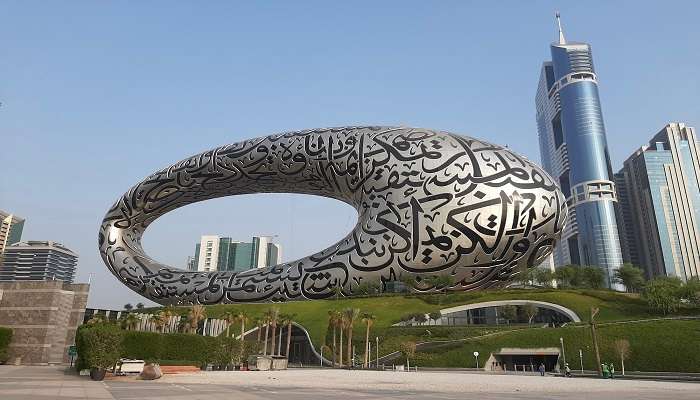
One of the oldest buildings in Dubai, the Dubai Museum offers a glimpse of the city’s gradual transformation from an insignificant fishing village to a modern metropolis in a chronological manner. The museum was also home to a former reigning monarch before serving as a prison and then a museum in 1971. The museum has a pile of historical pieces of artwork on display, including pearl diving equipment, millennium-old boats called Dhows, and other useful things.
Location: Inside the Al Fahidi Fort, Al Fahidi Historical Neighbourhood
Timings: Saturday to Thursday: 8:30 AM- 8:30 PM and on Friday: 2:30 PM – 8:30 PM
Entry Fees: AED 3 for adults, AED 1 for children.
Related Post: Dubai In July
2. Al Farooq Mosque

An epitome of traditional Arabian architecture, the Al Farooq Mosque is a serene oasis amidst the historical Al Fahidi Neighborhood. The legendary Blue Mosque in Istanbul inspired its architectural style. Moreover, the intricate details that the mosque bears are of extreme admiration and wonder.
Location: Al Musalla Road, Al Fahidi Historical Neighbourhood, Dubai, UAE
Timings: Open daily for prayers; non-Muslim visitors allowed outside of prayer times
Entry Fees: Free
3. Coins Museum
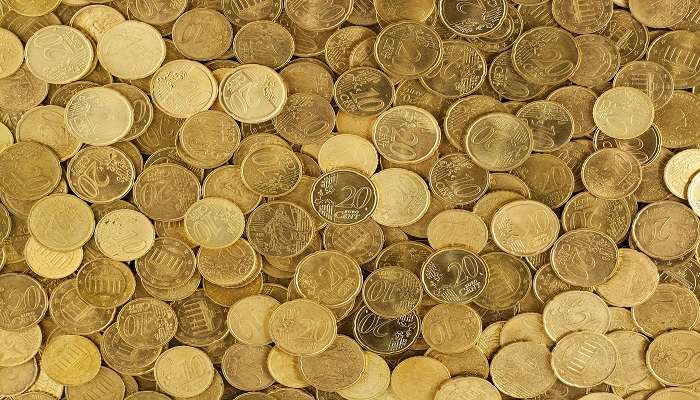
People travelling to the Al Fahidi Historical Neighborhood can visit the Coins Museum to better understand the currency’s history and Dubai’s economic evolution. The museum displays 470 coins from various eras spread out over two floors. For instance, the museum’s third room showcases Dirhams and Dinars used in the Abbasid Caliphate. Visitors learn about Dubai’s monetary system, currency evolution, and trade routes.
Location: Al Fahidi St, Al Fahidi Historical Neighbourhood, Dubai, UAE
Timings: Saturday to Thursday: 8:30 AM – 8:30 PM and on Friday: 2:30 PM- 8:30 PM
Entry Fees: AED 3 for adults, free for children under 12
Related Post: Wild Wadi Waterpark Jumeirah
4. Coffee Museum
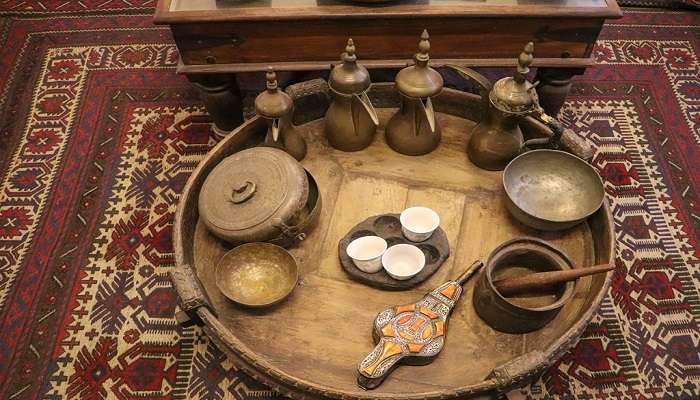
Even though coffee isn’t native to the UAE, it has significantly influenced the Emirate’s history and culture. To learn more about the influx of coffee in Dubai, the Coffee Museum is the perfect place to visit. With over 300 antique coffee pots on display and other interactive exhibits, the Museum tells the story of the beverage in the Emirates.
Location: Villa 44, Al Fahidi Historical Neighbourhood, Bastakiya – Bur Dubai
Timings: 09:00 to 17:00 (Closed on Friday)
Entry Fee: No entry fee
5. Textile Market
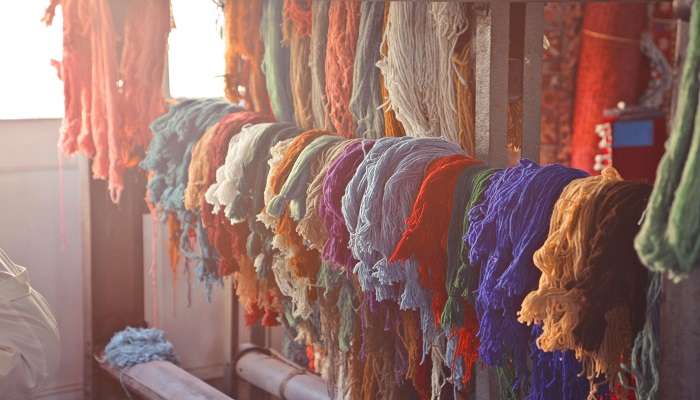
The Textile Souk is one of the most archaic marketplaces in the area. Housed under wooden roofs, it offers a glimpse into the wide variety of textiles, embroidered fabrics, elaborately woven rugs, and cultural garments made of Emirati craftsmanship. People can stroll around the place, collecting specimens of Arabic clothing, such as premium silks, fabrics, and intricately printed garments.
Location: Al Fahidi Street, Al Fahidi Historical Neighbourhood, Dubai, UAE.
Timings: Open daily from morning till evening.
Entry Fee: Free
Related Post: Kite Beach
6. Sheikh Mohammed Center For Cultural Understanding
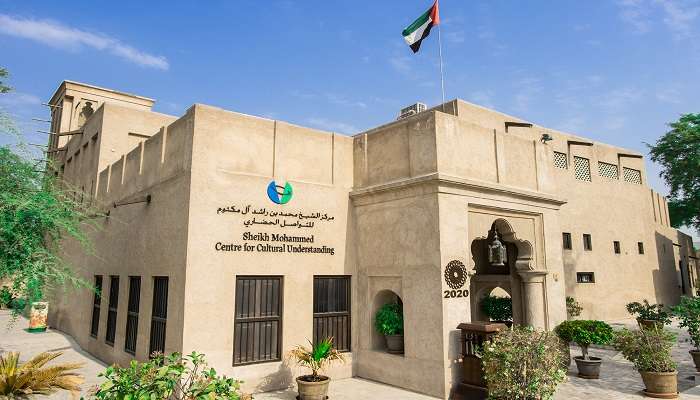
The Sheikh Mohammed Center for Cultural Understanding (SMCCU) was opened to the public in 1998 to spread the unique culture of the UAE and help visitors gain insight into authentic Emirati traditions. Engaging workshops, guided tours, and cultural dining sessions are held to promote cross-cultural exchanges and understanding. People can get hands-on experience in multiple activities, including traditional cooking demonstrations and Arabic calligraphy, and even have Q&A sessions with the hosts.
Location: Al Musalla Road – Al Fahidi – Dubai – United Arab Emirates
Timings: 8 PM – 4 PM
Entry Fees: AED 25
Al Fahidi Historical Neighbourhood Opening Hours And Entrance Fees
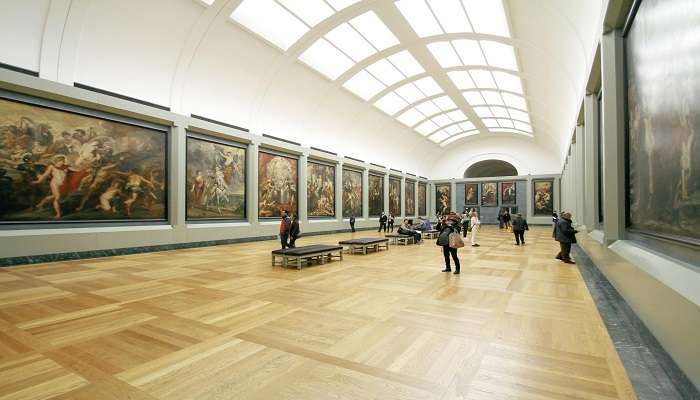
The Al Fahidi Historical Neighborhood is open 24 hours a day. However, specific tourist sites within the neighbourhood, such as galleries, cultural centres, and museums, have their opening and closing hours, generally from 8:00 AM to 10:00 AM.
The Al Fahidi Historical Neighborhood does not charge entry fees. However, some tourist places within the neighbourhood, like the Dubai Museum, charge a nominal entry fee. Other galleries and museums also charge varying fees, so checking the prices before visiting is advisable.
Related Post: Tourist Places In Dubai
How To Reach The Al Fahidi Historical Neighbourhood?

Visitors can easily reach the Al Fahidi Historical Neighborhood, located in a central position in Dubai. Below are several ways to reach Al Fahidi.
By Rail
Visitors can take the Green Line Metro and get off at the Al Fahidi station. From there, it’s a short walk to the neighbourhood. People can also board a bus for faster travel after getting off the metro.
By Road
People can book a cab to Al Fahidi or use widely used services such as Careem and Uber. Travelling by a personal vehicle or driving a rental car is also convenient for tourists.
By Water
The classic means of transportation in the UAE is the Al Abra, a small wooden boat. People can enjoy the trip by basking in the gorgeous view from the banks of Dubai and getting lost in the serenity of the ride.
You May Also Like To Read: Dubai To Salalah Road Trip
Dubai is a city of modern wonders and cultural richness alike. The foundation of Dubai as a port giant was laid way back in the 19th century. One of the contributing areas was the Al Fahidi Historical Neighborhood. This region is vastly preserved for its historical eminence, with museums and heritage sites opened up for the public to view. So, if you are eager to immerse yourself in Dubai’s rich heritage and witness its authentic charm, book a trip to Dubai now! While strolling through the compact lanes and exploring the wind-tower houses, you will surely be transported back in time.
For our editorial codes of conduct and copyright disclaimer, please click here.
Cover Image Credit: Timothy A. Gonsalves. For Wikimedia commons
Frequently Asked Questions About Al Fahidi Historical Neighbourhood
What is Al Fahidi famous for?
Al Fahidi is renowned for its well-maintained archaic architecture, historic sites, and narrow winding alleys, which offer an insight into Dubai's cultural past. The cultural exhibits, art galleries, and museums are also significant.
What materials are used in Al Fahidi's historical neighbourhood?
The buildings in the Al Fahidi Historical Neighborhood are made of gypsum, stone, and even coral. These materials were popular in the past due to their widespread availability and capacity to act as natural insulators.
What is Al Fahidi's other name?
The other name of Al Fahidi is Al Bastakiya. It was dubbed after Iran's Bastak region, from which a lot of the region's original settlers arrived.
What is Al Fahidi Fort made of?
One of Dubai's most ancient buildings, the Al Fahidi Fort, is made of shell rubble and coral cemented together with lime. The archaic architectural qualities astound the experts even today.
Which station is near Al Fahidi?
The metro station nearest to Al Fahidi is Al Fahidi Station on Dubai's Green Line. People can commute easily between places using this convenient means.
People Also Read:
Famous Historical Places In India Historical Places In Delhi Historical Places In The World

Unveil the hidden treasures of the globe and turn every travel dream into reality. As a Content Writer, I am passionate enough to craft stories from ancient wonders to modern marvels. My words paint the picture-perfect itinerary for unforgettable experiences. Let my words be your trusted guide to immerse in the diverse culture and discover the beauty of the unknown.











